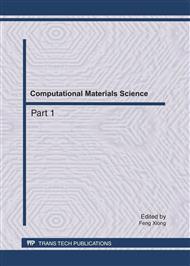p.568
p.574
p.581
p.584
p.590
p.595
p.601
p.606
p.611
Change Detection from Landsat TM Images Using Change Vector Analysis
Abstract:
Change detection is a process of extracting, analyzing, and defining change information from remote sensing imageries. At present, remote sensing change detection methods are mainly classified into two categories, one based on the spectral characteristics of the type of approach, and the other is spectral change vector analysis. In this paper, a simplified threshold variable step-size search which can be used on determining changes in the threshold vector is adopted, as well as the supervised classification technique in the direction cosine space with the type of focal point in the initial assay vector remote sensing images. Results are discussed in the last part of this paper, which show that CVA can extract change information effectively in our study area of Wuhan city.
Info:
Periodical:
Pages:
590-594
Citation:
Online since:
July 2011
Authors:
Price:
Сopyright:
© 2011 Trans Tech Publications Ltd. All Rights Reserved
Share:
Citation:


